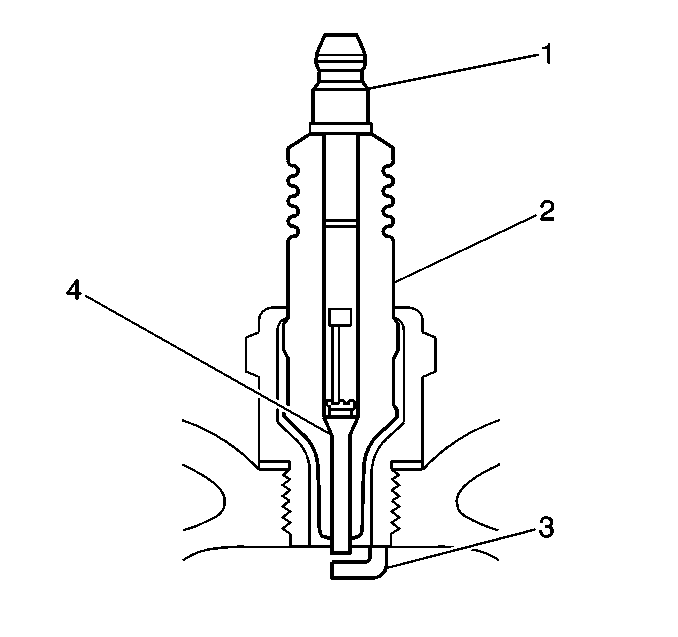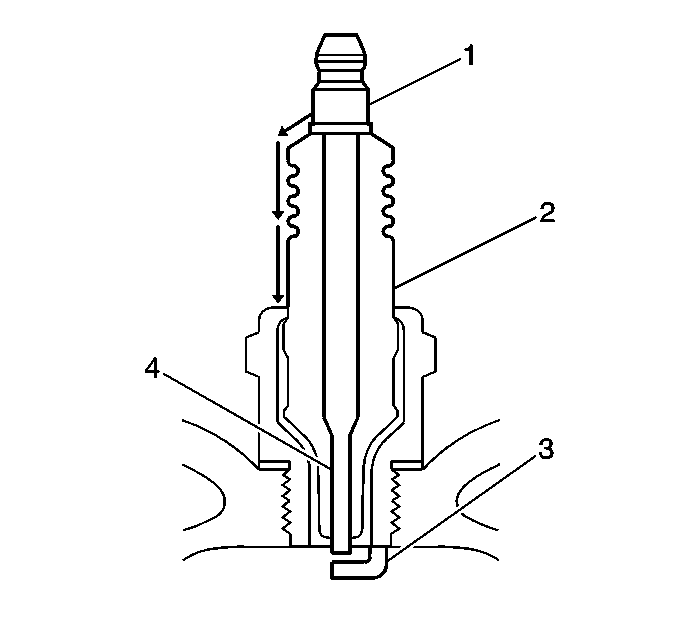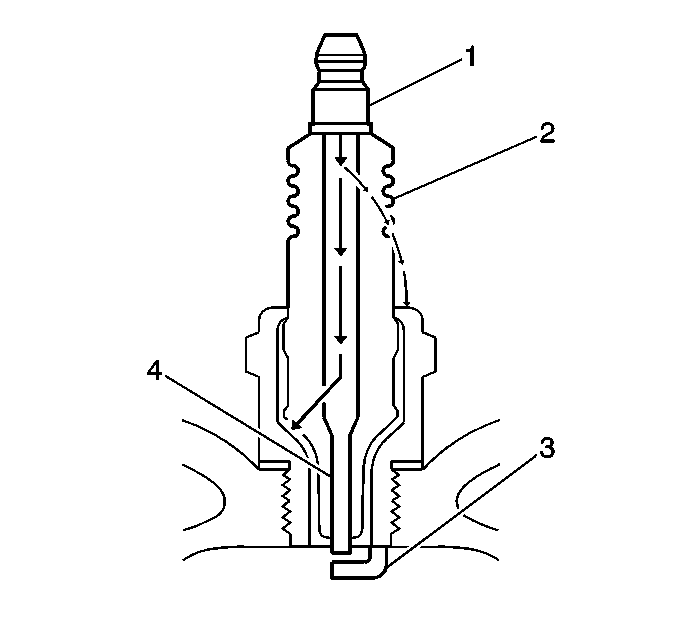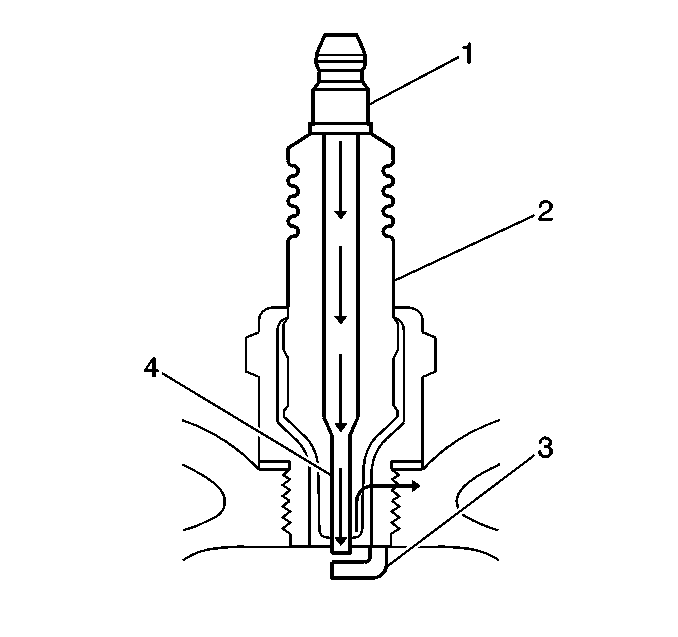For 1990-2009 cars only
Spark Plug Usage
| • | Ensure that the correct spark plug is installed. An incorrect spark plug causes poor driveability conditions. Refer to Ignition System Specifications for the correct spark plug. |
| • | Ensure that the spark plug has the correct heat range. An incorrect heat range causes the following conditions: |
| - | Spark plug fouling due to a colder plug |
| - | A pre-ignition condition, causing spark plug and/or engine damage due to a hotter plug |
Spark Plug Inspection
| • |

|
| - | Inspect for a bent or broken terminal post (1). |
| - | Test for a loose terminal post (1) by twisting and pulling the post. The terminal post (1) should NOT move. |
| • |

|
| - | Inspect the spark plug boot for damage. |
| - | Inspect the spark plug recess area of the cylinder head for moisture from such oil, from coolant, or from water. A saturated spark plug boot causes arcing to ground. |
| • |

|
| • |

|
| - | Measure the gap between the center electrode (4) and the side electrode (3) terminals. Refer to Ignition System Specifications . An excessively wide electrode gap can prevent correct spark plug operation. |
| - | Inspect for the correct spark plug torque. Refer to Ignition System Specifications . Insufficient torque can prevent correct spark plug operation. An over-torqued spark plug causes the insulator (2) to crack. |
| - | Inspect for signs of tracking that occurred near the insulator tip instead of at the center electrode (4). |
| - | Inspect for a side electrode (3) that is broken or worn. |
| - | Inspect for a broken, worn, or loose center electrode (4) by shaking the spark plug. |
| • | A rattling sound indicates internal damage. |
| • | A loose center electrode (4) reduces the spark intensity. |
| - | Inspect for bridged electrodes (3, 4). Deposits on the electrodes reduce or eliminate the gap. |
| - | Inspect for worn or missing platinum pads on the electrodes (3, 4), if equipped. |
| - | Inspect for excessive fouling. |
| • |
Spark Plug Visual Inspection
| • | Normal operation--Brown to grayish-tan spark plugs, with small amounts of white powdery deposits are normal combustion by-products from fuels with additives. |
| • | Carbon-fouled plugs--Dry, fluffy black carbon or soot caused by the following conditions: |
| - | Rich fuel mixtures |
| • | Leaking fuel injectors |
| • | Excessive fuel pressure |
| • | Restricted air filter element |
| • | Incorrect combustion |
| - | Reduced ignition system voltage output |
| • | Weak coils |
| • | Worn ignition wires |
| • | Incorrect spark plug gap |
| - | Excessive idling or slow speeds during light loads can keep the spark plug temperatures so low that the normal combustion deposits may not burn off. |
| • | Deposit fouling--Oil, coolant, or additives that include substances such as silicone, evidenced by a very white coating, reduces the spark intensity. Most powdery deposits will not affect spark intensity unless they form into a glazing over the electrode. |
